- Home
- slideshows
- miscellaneous
- 35 vintage photos taken by the EPA reveal what American cities looked like before pollution was regulated
35 vintage photos taken by the EPA reveal what American cities looked like before pollution was regulated
In Baltimore, trash and tires cover the shore at Middle Branch beside the harbor in 1973. The EPA regulates waste now, and sets criteria for landfills. While the open dumping of waste is banned, it still happens.

Baltimore City did have some simple techniques to keep the harbor clean. Here, a screen has been placed across the water to trap trash. A heavy rain could break it, but it was effective when cleaned often.
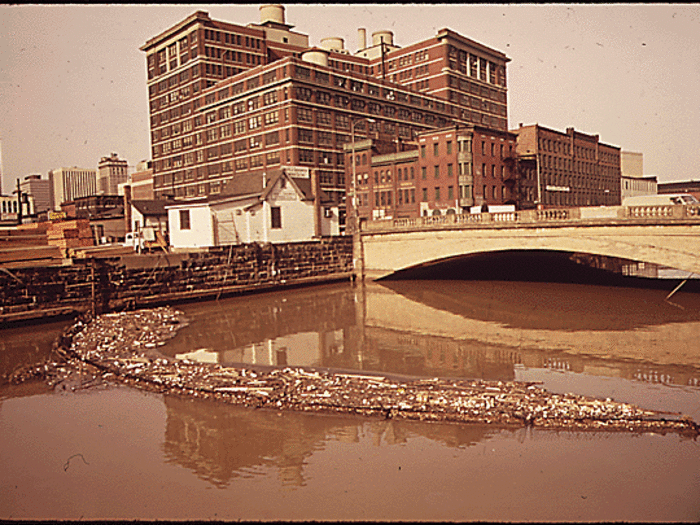
In Birmingham, which truckers in the 1960s called "smoke city", a boy throws a frisbee.
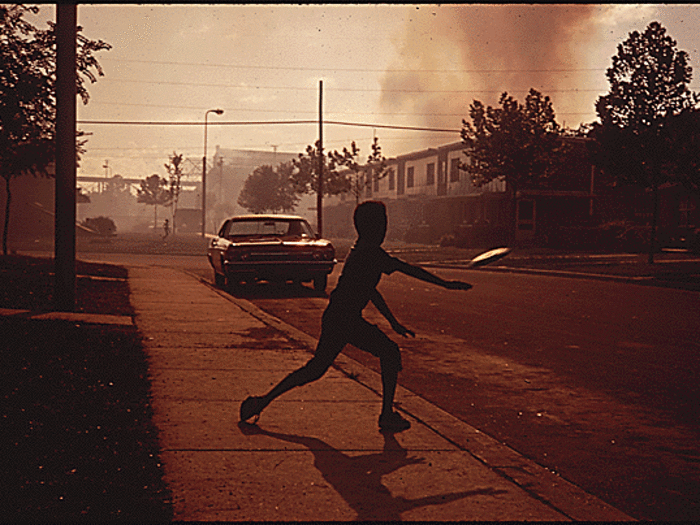
Source: Bham Now
A house in North Birmingham is barely visible in industrial smog coming from the North Birmingham Pipe Plant. It was the most polluted area of the city.
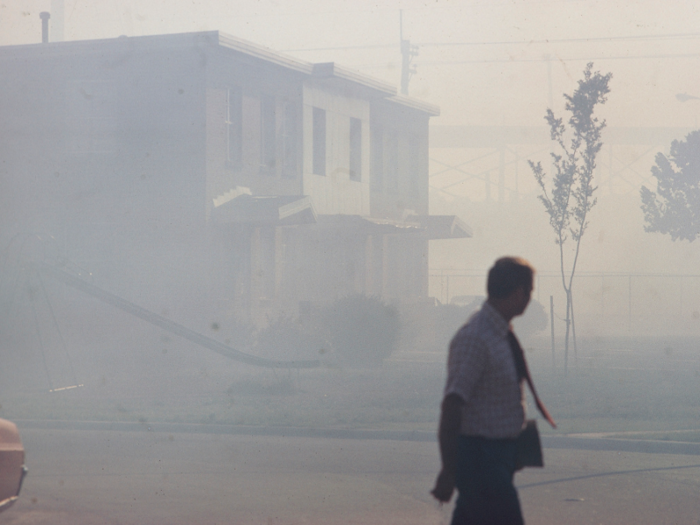
In Cleveland, in 1973, billowing smoke casts a gloom over the Clark Avenue bridge. Because it was an industrial city, the pollution was severe.
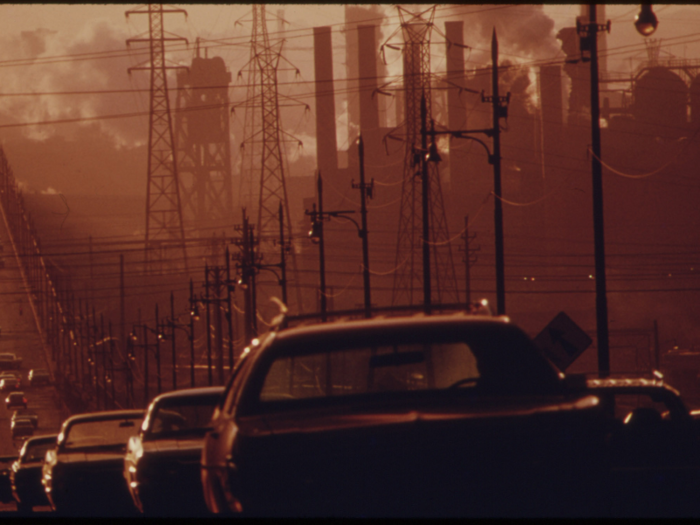
Source: Ohio History Central
Cleveland's inner city was also a dumping ground for trash.
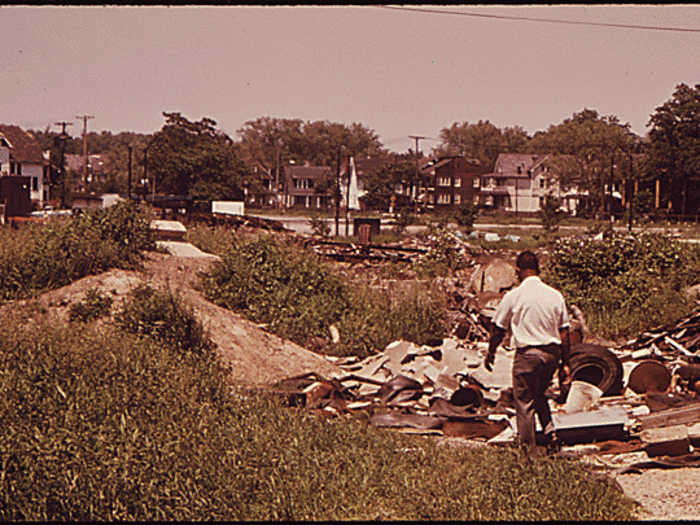
In Delaware, the city incinerator billows out smoke over the river. In 2016, a report released by New York University said 41 people living in Delaware still die because of air pollution every year.
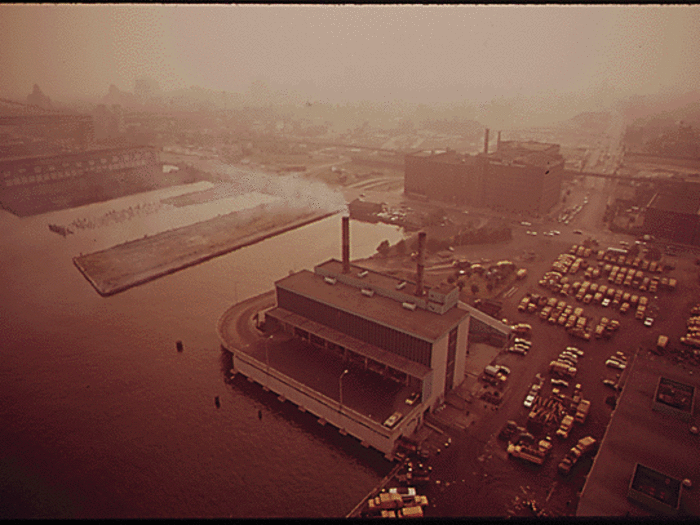
Source: Delaware Online
In Denver, murky light brown sewage is discharged by the Metro Sewage Treatment Plant into the South Platte River.
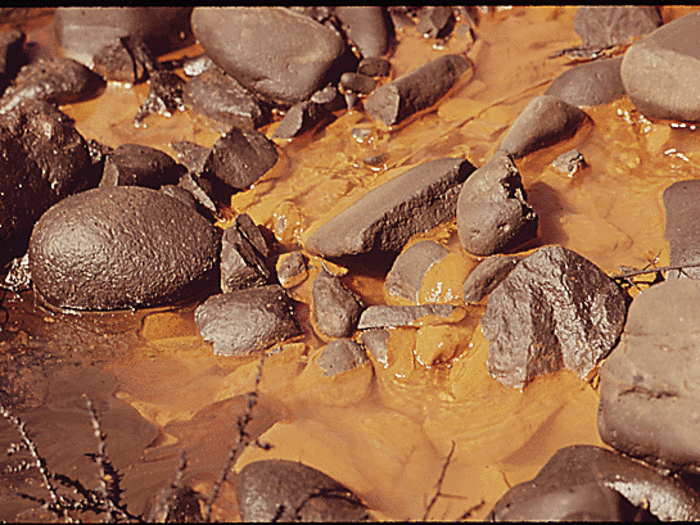
Here's a billboard in Denver in the 1970s. The city was known for having a brown cloud of pollution. In the late 1980s, the air pollution got so bad, the city developed a visibility standard — it asked whether downtown workers could see mountains that were only 35 miles away.
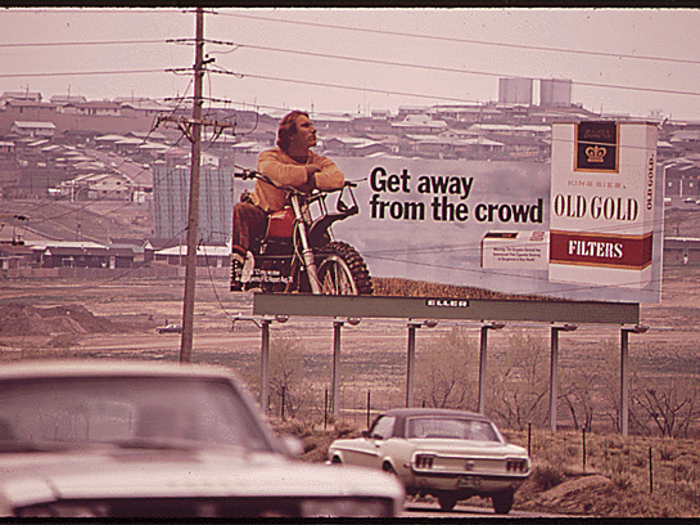
Source: The New York Times
In Kansas City's harbor, on the Missouri River, a local EPA worker points out a dying fish. While the river been much cleaner since the Clean Water Act was passed, trash and industrial contaminants still end up in it.
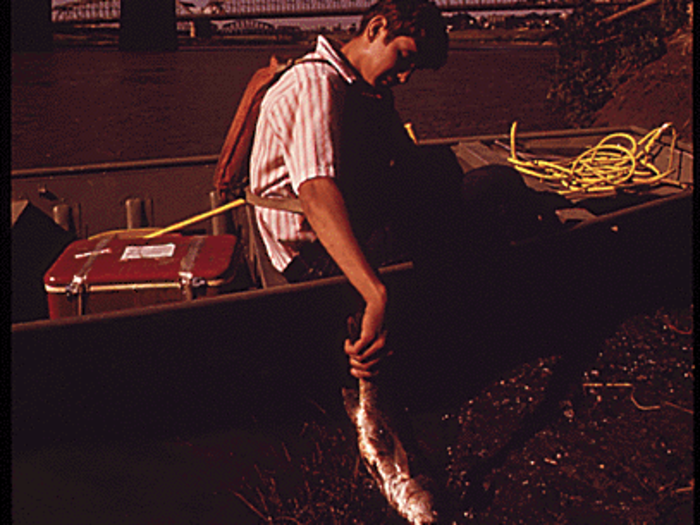
Source: The Kansas City Star
In Los Angeles, the outline of the sun can be clearly seen because air pollution creates a buffer. In 1943, 30 years before this photo was taken, the smog was so bad, the city's residents thought it was a gas attack.
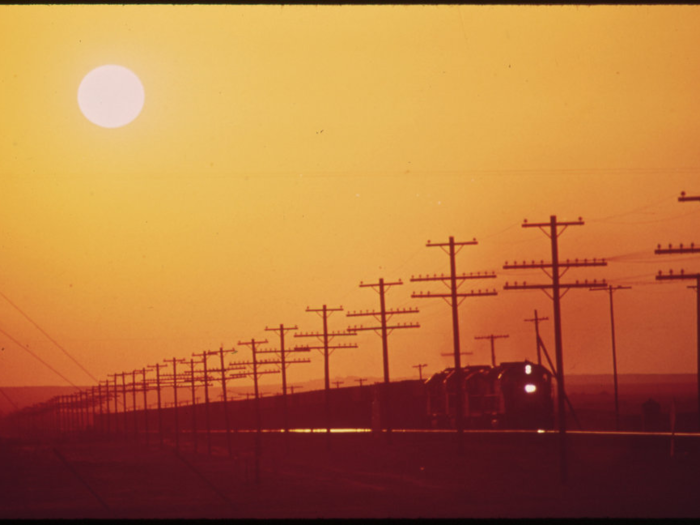
Source: California Sun
Los Angeles county monitored pollution on the roads, at least.
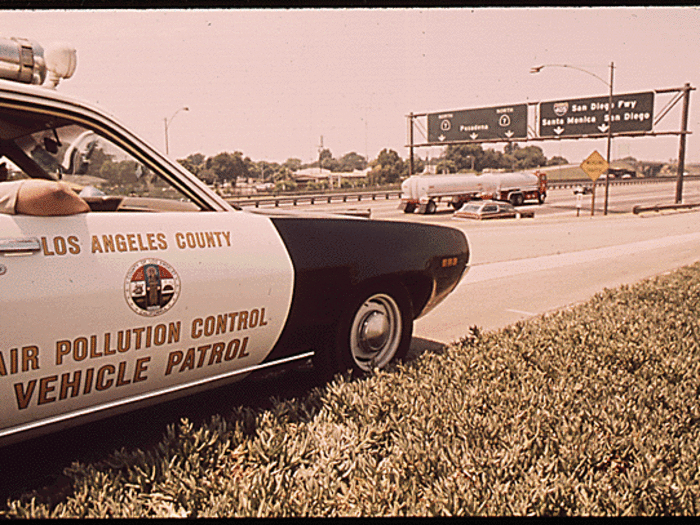
In New Orleans, fumes spread over the streets, billowing out from Kaiser Aluminum Plant's smoke stack.
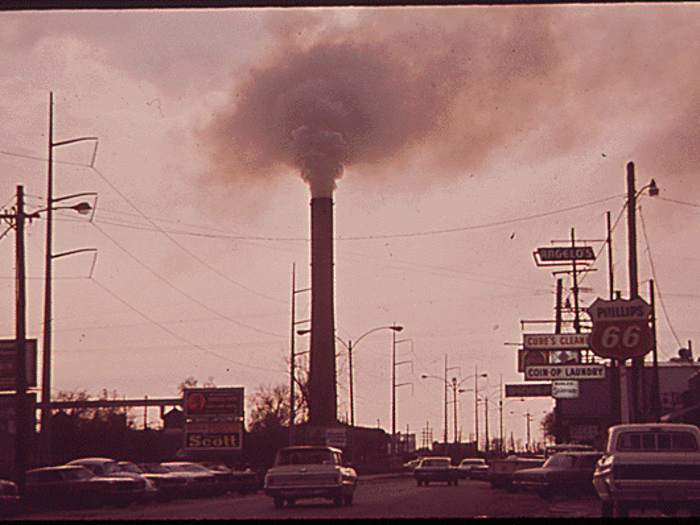
In an illegal dump in New Orleans, garbage turned to sludge when a lake overflowed into it. In the 1970s, the EPA found 66 pollutants in the city's drinking water. And the city's water is known for its oily taste.
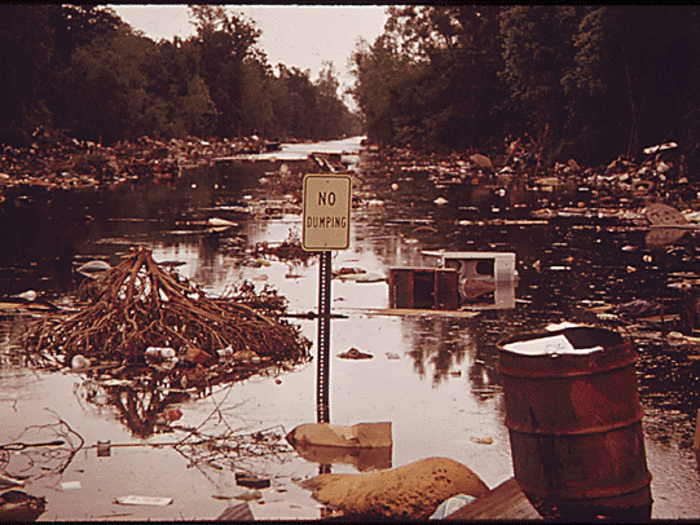
Source: Los Angeles Times
In Bayonne, New Jersey, raw and partially digested sewage can be seen darkening the water.
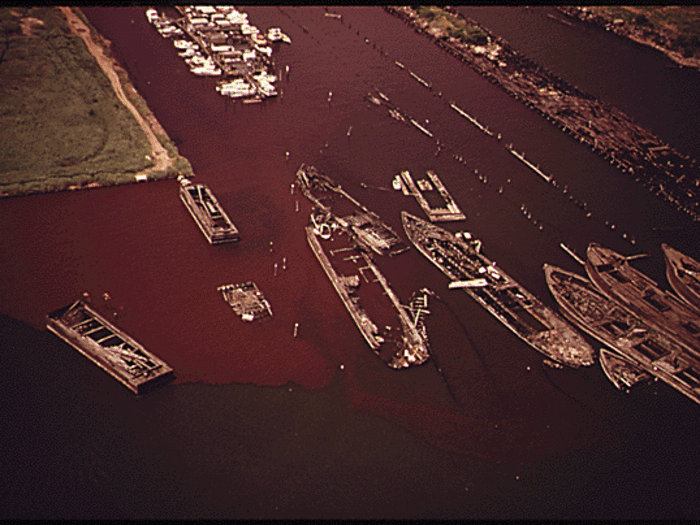
New York is one of the most photographed cities for "The Documerica Project." Here, the dumping of trash ruins an otherwise good view of Manhattan and the Twin Towers in 1973.
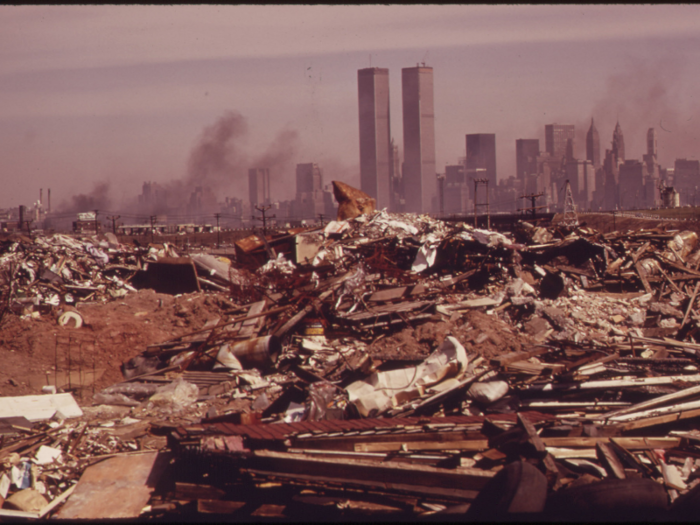
In Jamaica Bay, New York, an abandoned car sits waterlogged in 1973.
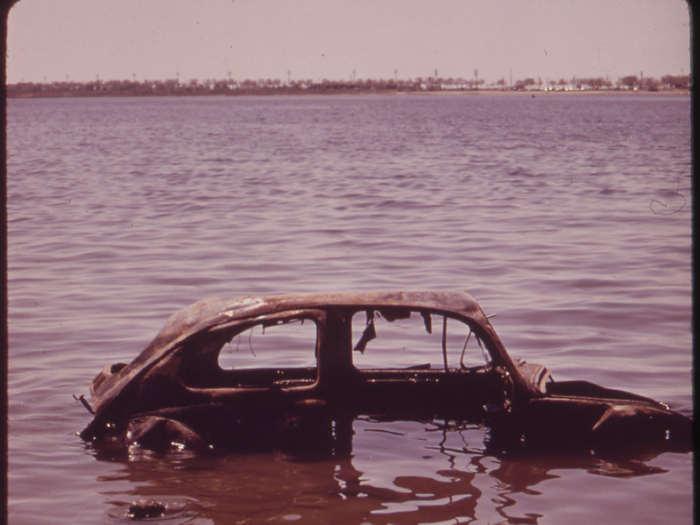
Another car has sunk halfway into the beach at Breezy point, south of Jamaica Bay. The EPA now helps regulate how the city disposes of trash to prevent dumping in the Atlantic.
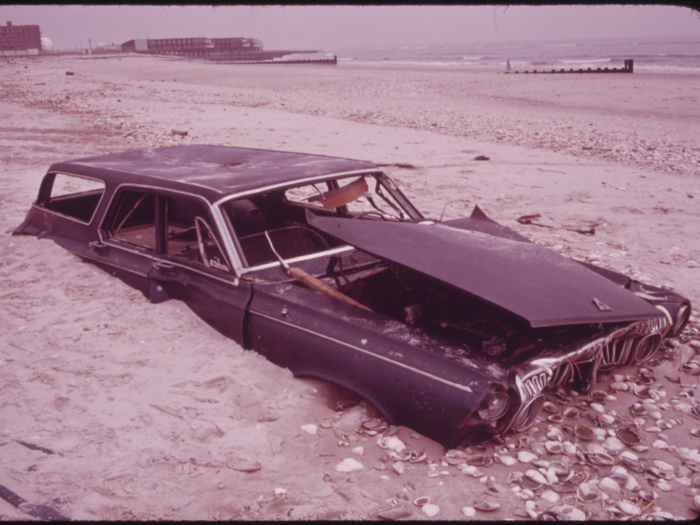
Source: EPA
Though it might not be clear, this is the George Washington Bridge going over the Hudson River, covered in thick smog. In 1965, a study by New York City Council found breathing New York's air had the same effect as smoking two packets of cigarettes a day.
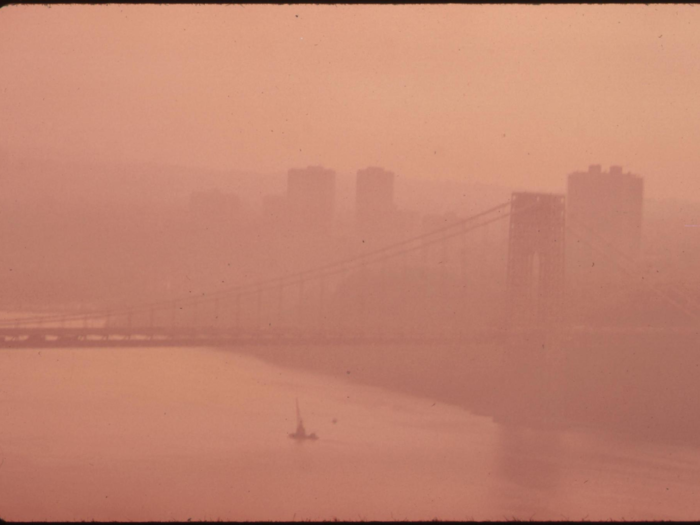
Source: The New York Times
Seen here is the Statute of Liberty surrounded by oil. It was the result of one of 300 oil spills in the first six months of 1973. Between April and June of that year, 487,000 gallons of oil were dispersed in the New York Harbor and its tributaries.
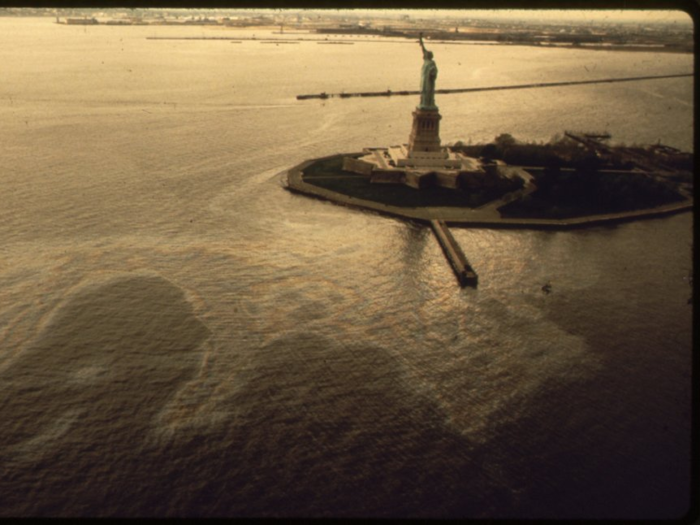
Source: The New York Times
It is estimated about 6 million gallons of coal were dumped into the New York Bight by the Edison Power Plant in Manhattan in the early 1970s.
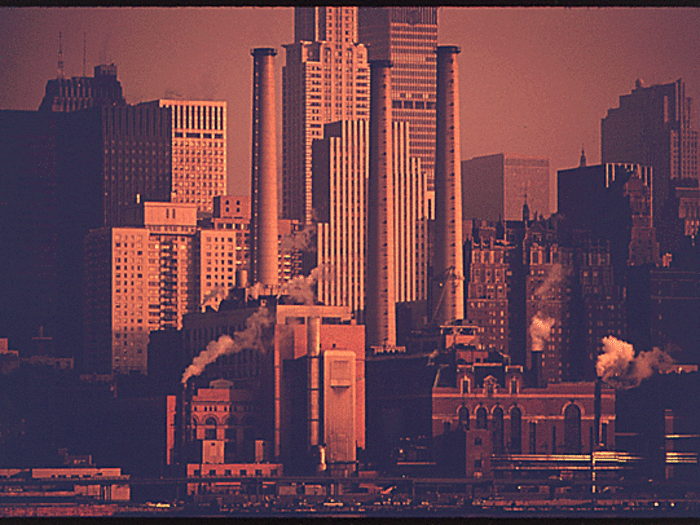
Sources: National Archives, BOEM
Barges, filled with New York's waste, are pulled down the East River to Staten Island Landfill. In the 1970s, New York produced 26,000 tons of solid-waste every day.
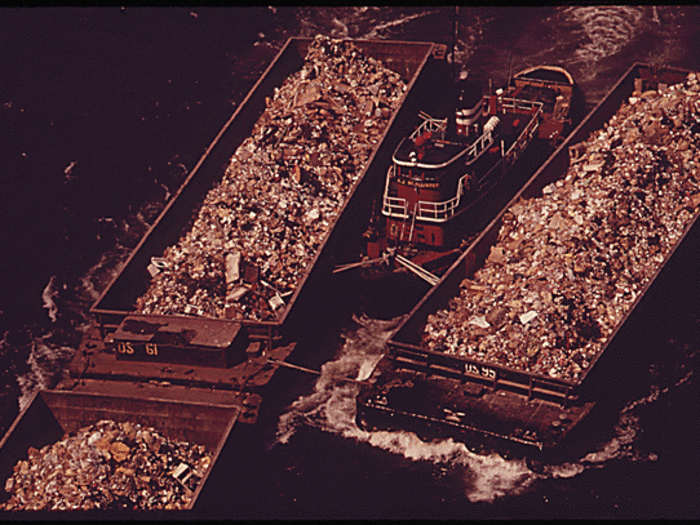
Source: National Archives
Rubble is loaded into barges before being dumped offshore, on a debris dump site, in the New York Bight. There were different distances for dumping different substances.
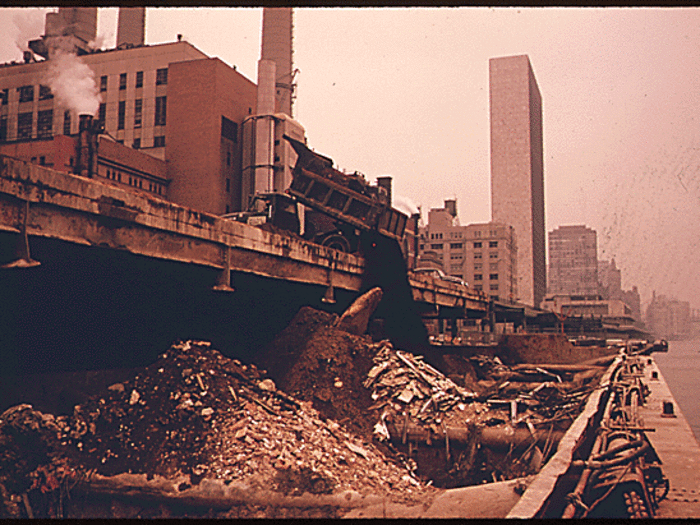
This is one of four New York City-owned vessels on its way to dump sludge 12 miles into the bight. In 1973, 5.8 million cubic yards of sludge was dumped. The sludge would settle on the bottom of the ocean, like mud, killing plants, and creating a dead sea.
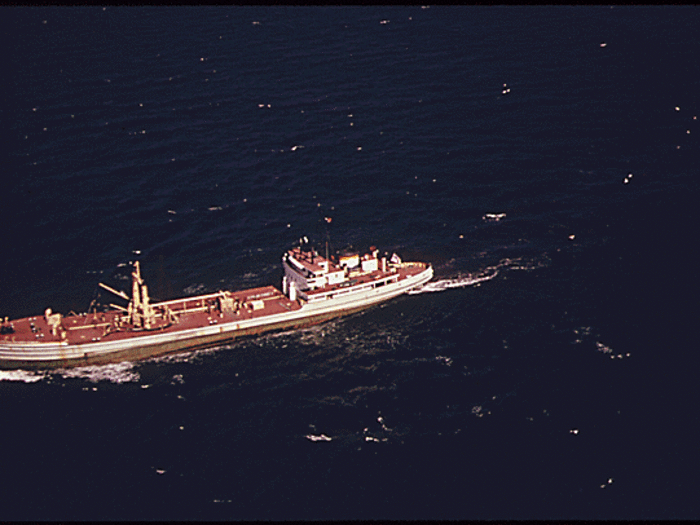
Sources: The New York Times, National Archives
Here, acid waste lightens the water. Acid waste was also dumped in the New York Bight, 15 miles off-shore. It made up 90% of industrial waste dumped in the area. In 1974, more than 3 million tons were dumped in the Bight.
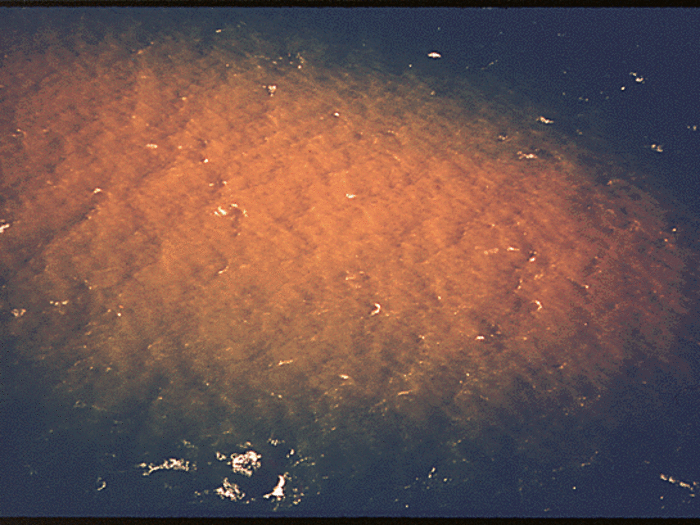
Source: National Archives
And while roads in Manhattan, like 108th Street and Lexington Avenue, might have piles of trash ...
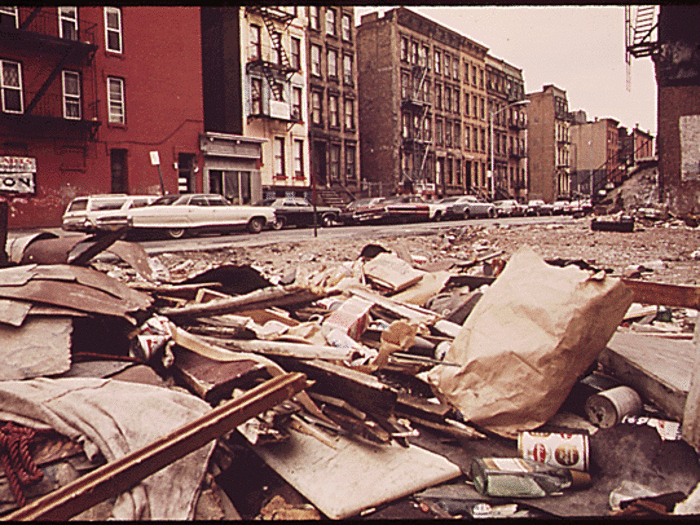
... it was worse in the Bronx. Here, the Bronx's Co-Op City housing development is beside a landfill that was still being used, even though it had exceeded its dumping capacity. If you look closely you can see scavenger birds flying over the trash.
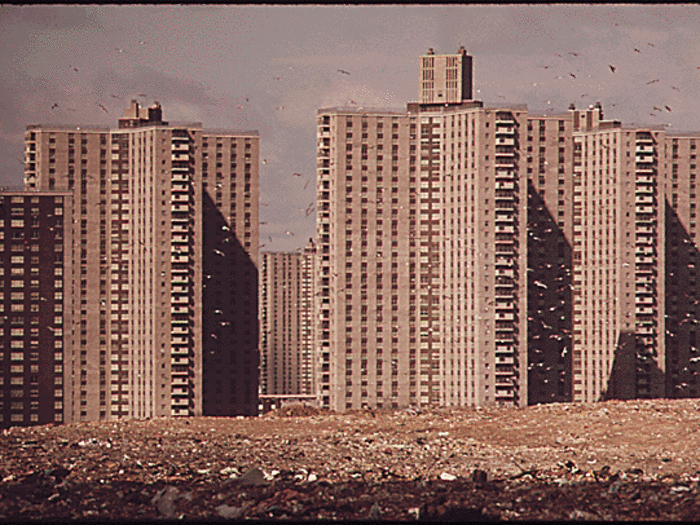
In Philadelphia, the sun is setting, but because of the smog it's hard to tell. In 2018, a study found the city was becoming more polluted between 2014 and 2016, after several years of decreasing pollution.
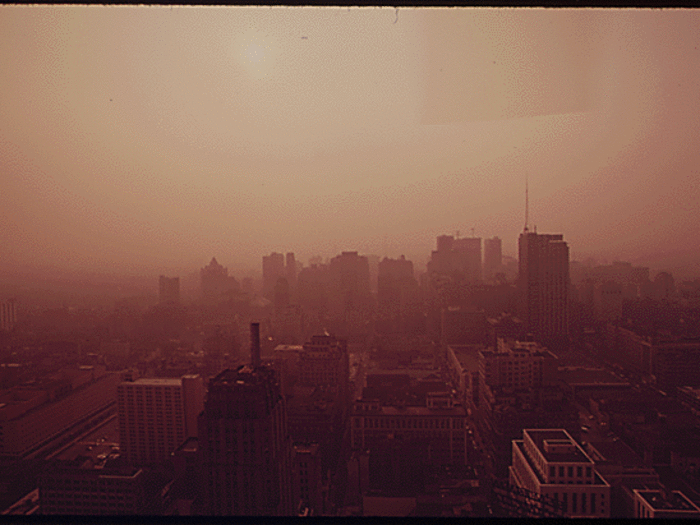
Source: Philadelphia magazine
In Pittsburgh, which was once called "Hell with the lid off," thick smoke creates a haze over the city.

Source: The Allegheny Front
A junkyard looms in front of the Monongahela River, which runs through Pittsburgh. According to Mayor Tom Murphy in 2001, the biggest complaint he heard about the city was that it was too dirty.
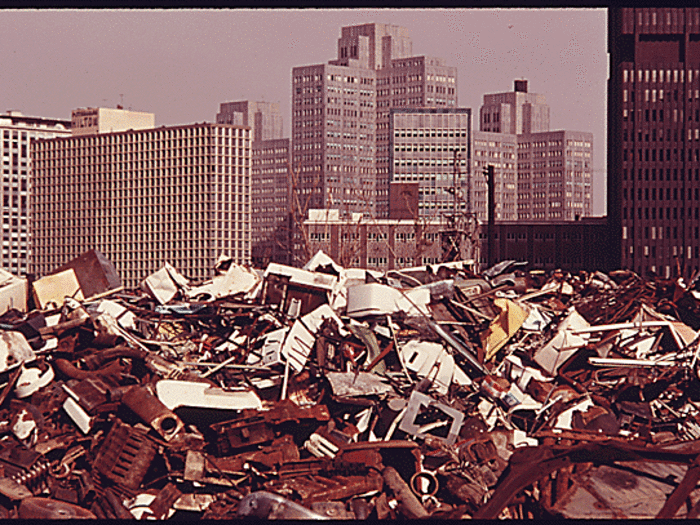
Source: Pittsburgh Post-Gazette
Near Pittsburgh, oil-coated trees on the shore of the Ohio River show the damage done by spills and industry.
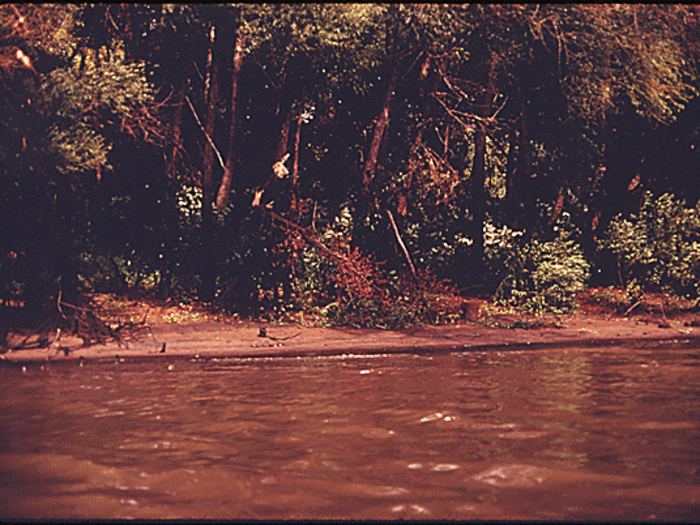
In San Francisco Bay, the Leslie salt ponds gleam at sunset. The ponds were built to extract salt from the bay water. In 2019, the EPA ruled the land, owned by Cargill Salt, was not bound by the Clean Water Act. The photographer behind this photo said the "water stinks."

Sources: KALW, Mercury News
In San Francisco, industrial black smoke billows out of a stack. During the 1970s, the biggest problem for the city was ozone pollution, which mainly comes from cars, industrial plants, power plants, and refineries.
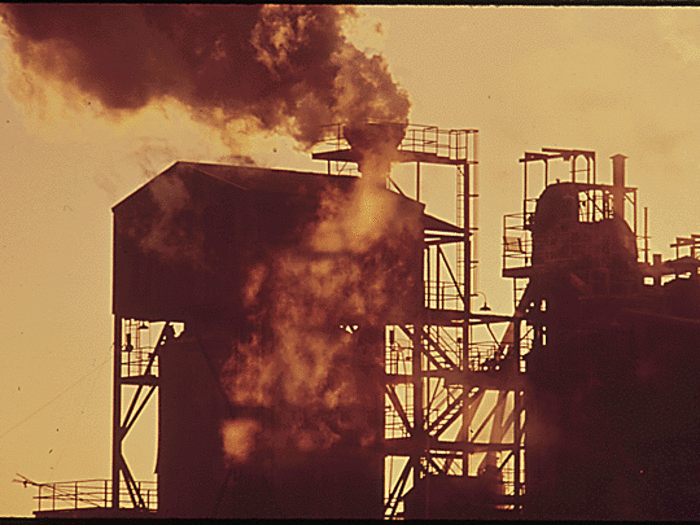
Source: China Dialogue, EPA
Here is one of the factories that polluted San Francisco.
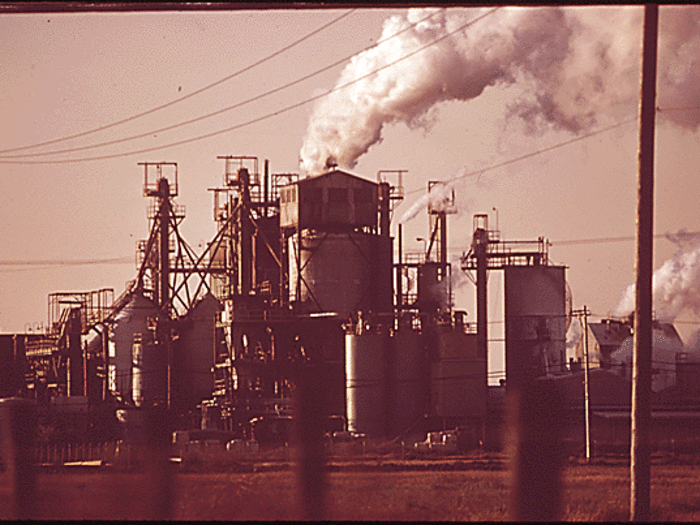
In Washington D.C., raw sewage flows out into the Potomac river. In 1970, a hot summer resulted in a "stomach-turning" smell coming from the Potomac, due to the mixing of sewage and algae. The pollution was blamed on a "hundred years of under-estimates, bad decisions, and outright mistakes," a director of the Federal Water Quality Administration told The New York Times. His description can be applied to a lot of the US before the EPA.
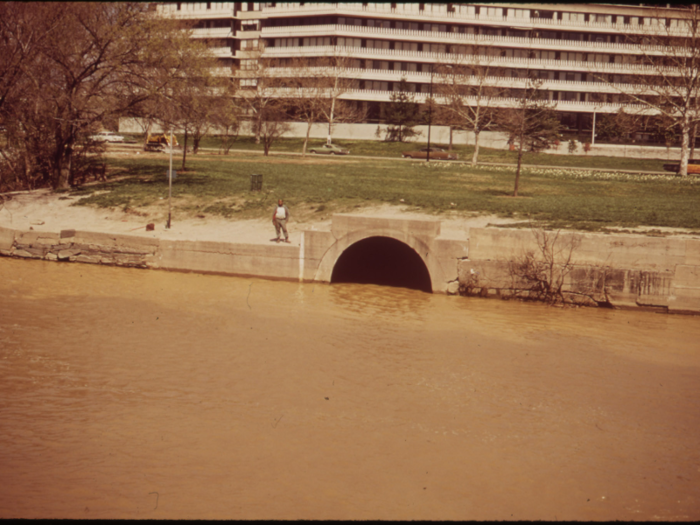
Source: The New York Times
Popular Right Now
Popular Keywords
Advertisement